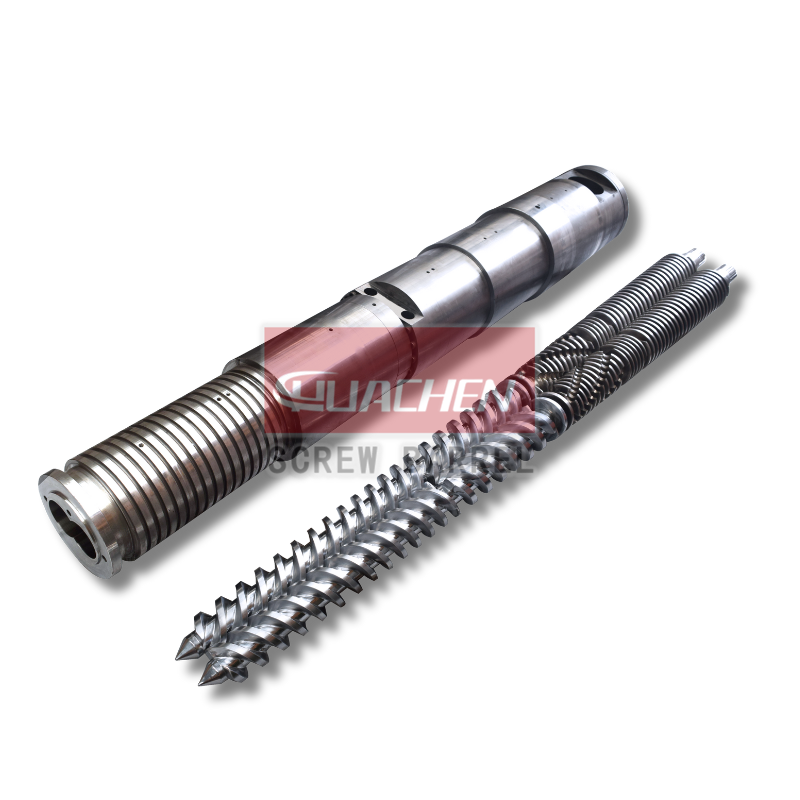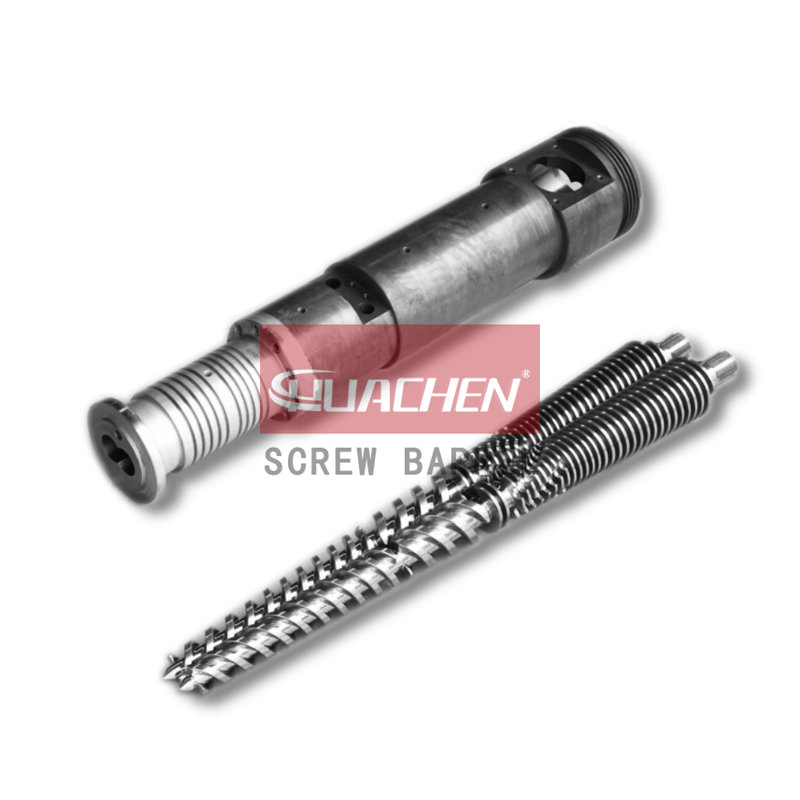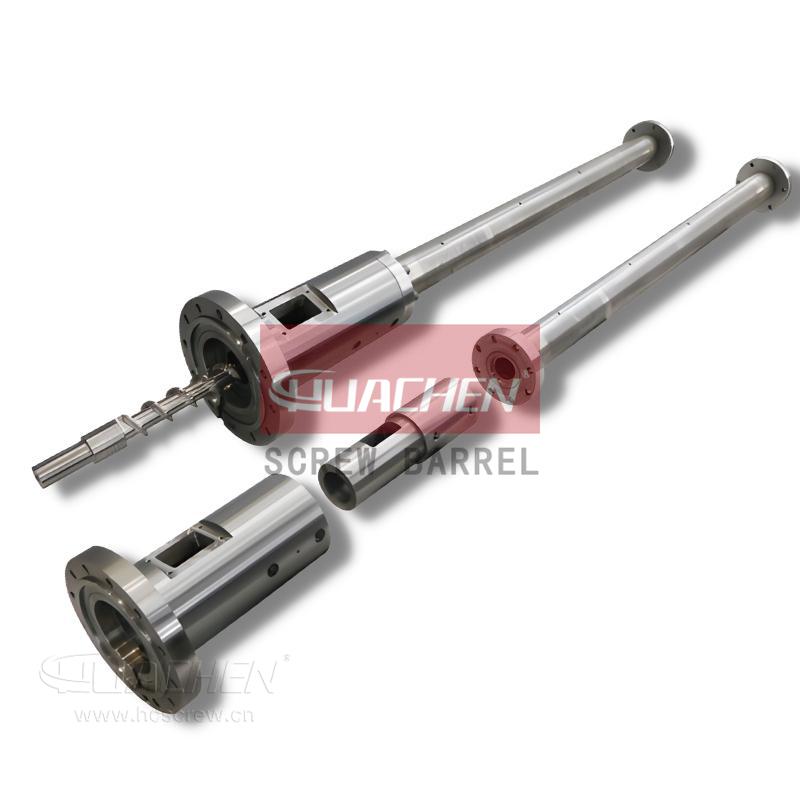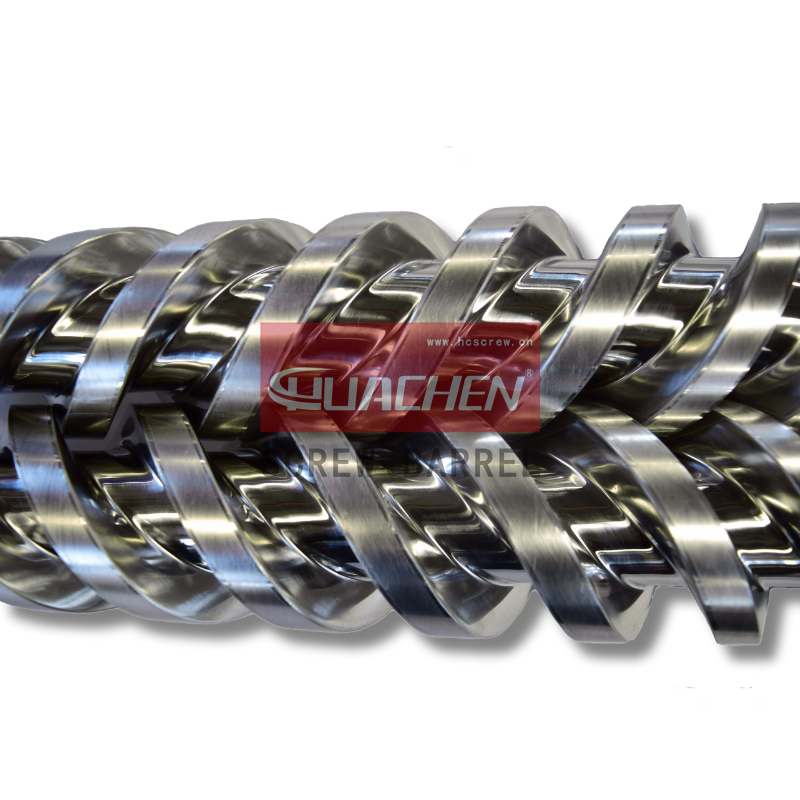Is There A Common Screw Design Can Process All Polymers?
Date:2022-7-06 Author:hcscrew

One of the most frequently asked questions is why there cannot be a common screw design that can process all polymers? Many people believe that plastics are all the same. As a matter of fact, different types of plastic can have extremely different processing characteristics. In this piece, you will find detailed answers to your questions with HUACHEN Screw Barrel.
A single screw serves 3 basic functions: conveying, melting, and metering or pumping solid raw materials. Polymers have unique properties, including thermal properties, viscoelasticity, solid and melt densities, and frictional properties. It is imperative to note that these properties are highly variable. Therefore, it is not possible for a common screw to process all types of polymers efficiently. Not all polymers will respond well to this screw, but it will not offer optimum efficiency.
In extrusion, for example, HDPE and HIPS can be compared by looking at their specific heats and processing temperatures. This is, the energy required to bring the polymers to processing temperatures. The processing temperatures of HDPE and HIPS appear to be similar, but HDPE has an average specific heat of 0.55 Btu/lb-°F (approx. 2.3 kJ/kg.K), while HIPS has an average specific heat of 0.40 Btu/lb-°F (approx. 1.67 kJ/kg.K). This means that 1lb (1lb = 0.4536kg) of HDPE consumes 37.5% more energy than HIPS to reach the required processing temperature.
Additionally, HDPE has a defined melting point since it is a crystalline material. PS, however, is amorphous and does not have a precise melting point. As a result, HDPE requires an additional 100 Btu/lb (approx. 232 kJ/kg) of heat of melting to overcome its crystalline nature. To reach the required processing temperature, HDPE consumes almost 50% more energy than HIPS.
It is also possible to define polymers by their viscoelasticity, which is how viscosity changes with temperature and shear rate. This property is crucial, since it determines how much energy is added to the polymer’s processing by the tearing force introduced by the screw rotation. A power law coefficient is a measure of viscosity as it relates to shear rate. A consistency index measures viscosity as a function of temperature. Shear rate and temperature determine how melt viscosity changes with increasing shear rate. Under shear, HIPS viscosity changes by 50% more than HDPE.
In terms of solid density, HDPE is approximately 90% of PS, but its melt density is only 77%. When HDPE melts, its ordered crystalline structure breaks and it expands, reducing the screw’s output. For HDPE, the screw must be 38% deeper than the screw for HIPS in order to achieve the same output. Furthermore, the screw’s compression rate and volume must be compensated for the expansion.
As HIPS viscosity response to shear rate (power law coefficient) is higher than HDPE, the same screw used for HDPE processing will not melt HIPS adequately if the HDPE screw groove is deeper than the HIPS screw groove. Because of the reduced viscosity, the residual HIPS solid particles melt at low shear rates.
Depending on the material being fed, the feed rate determines the screw’s total output. A number of factors determine particle shape, density, bulk density, inner particle-to-particle friction, and external particle-to-metal friction. Especially in extruder hoppers, inlets and barrels. A study has shown that PS’s dynamic coefficient of friction against steel is 50% higher than HDPE’s. This affects the solid particles’ early tightness and the melting efficiency of the screw groove.
The fact that one difference may offset another complicates dealing with these differences in polymer properties through screw design. It is clear that designing a screw that can handle both HDPE and PS would be very difficult. Developing a screw that is compatible with polymers with higher melting points, like PC, or dried polymers, would be interesting. When dealing with these cases, significant differences in properties are involved. In order for processing to be efficient and cost-effective, each of these factors must be taken into account. For this reason, specific screws need to be designed for specific polymers. It is not to use a common screw design to process all polymers.
Once a reasonable screw has been designed for a particular polymer based on its performance data, there is no need to redesign a new screw for every size. Unless the change in size is significant, other screw sizes can be obtained by scaling up or down.
Contact us by mails or other ways you like to get more screw barrel engineering support from HUACHEN Screw Barrel.
TAGS
HUACHEN Screw Barrel Recent Post
- High-performance PVC Screw Barrel for Efficient Extrusion
- Durable Conical Twin Screw Barrel for Precision PVC Pipe Production
- High-Speed Screw Barrel for Increased Extrusion Efficiency
- Super Wear-Resistant Bimetallic Alloy Coating Screw Barrel for High Output Extruders
- High-Precision Parallel Twin Screw Barrel for Extrusion Excellence
- Top Quality Single Screw Barrels for Plastic Extrusion Applications
- High-quality Extruder Screw Barrel for Reliable Performance
- Efficient Plastic Extrusion Screw Barrel for Superior Output
conical twin screw barrel extruder screw barrel extrusion screw barrel Foam sheet processing high speed screw barrel HUACHEN SCREW news injection screw barrel parallel twin screw barrel pa screw barrel pe making formula pe screw barrel plastic fiber processing plastic fibre screw barrel Plastic film making screw barrel plastic pipe processing Plastic profile processing Plastic raw material knowledge pp screw barrel PVC making formula pvc screw barrel related parts for screw barrel screw barrel engineering work screw barrel knowledge single screw barrel twin screw barrel
;


